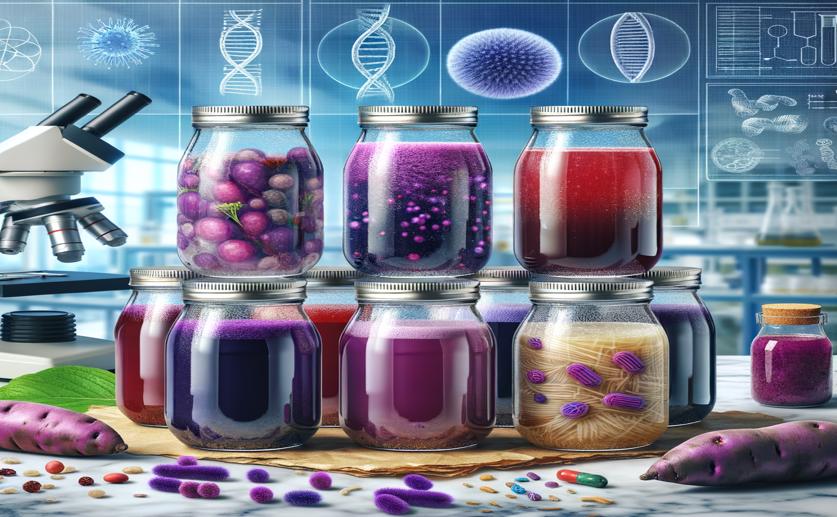
How Different Bacteria Affect Nutrients and Flavors in Purple Sweet Potato Juice
Greg Howard
26th July, 2024

Image Source: Natural Science News, 2024
Key Findings
- Researchers at Jiangnan University found that fermenting purple sweet potato juice with lactic acid bacteria significantly increased the bacteria count, indicating successful fermentation
- The fermentation process boosted the juice's total phenolic and flavonoid content, enhancing its antioxidant properties
- LAB fermentation also improved the aroma and sensory quality of the juice, making it more appealing to consumers
References
Main Study
1) Effects of different lactic acid bacteria on phenolic profiles, antioxidant capacities, and volatile compounds in purple sweet potato juice.
Published 25th July, 2024
https://doi.org/10.1007/s13197-024-05959-5
Related Studies
2) The botanical profile, phytochemistry, biological activities and protected-delivery systems for purple sweet potato (Ipomoea batatas (L.) Lam.): An up-to-date review.
3) Sweet Potato Is Not Simply an Abundant Food Crop: A Comprehensive Review of Its Phytochemical Constituents, Biological Activities, and the Effects of Processing.
4) Improvement in color expression and antioxidant activity of strawberry juice fermented with lactic acid bacteria: A phenolic-based research.
5) Effect of lactobacillus strains on phenolic profile, color attributes and antioxidant activities of lactic-acid-fermented mulberry juice.



 17th June, 2024 | Jim Crocker
17th June, 2024 | Jim Crocker